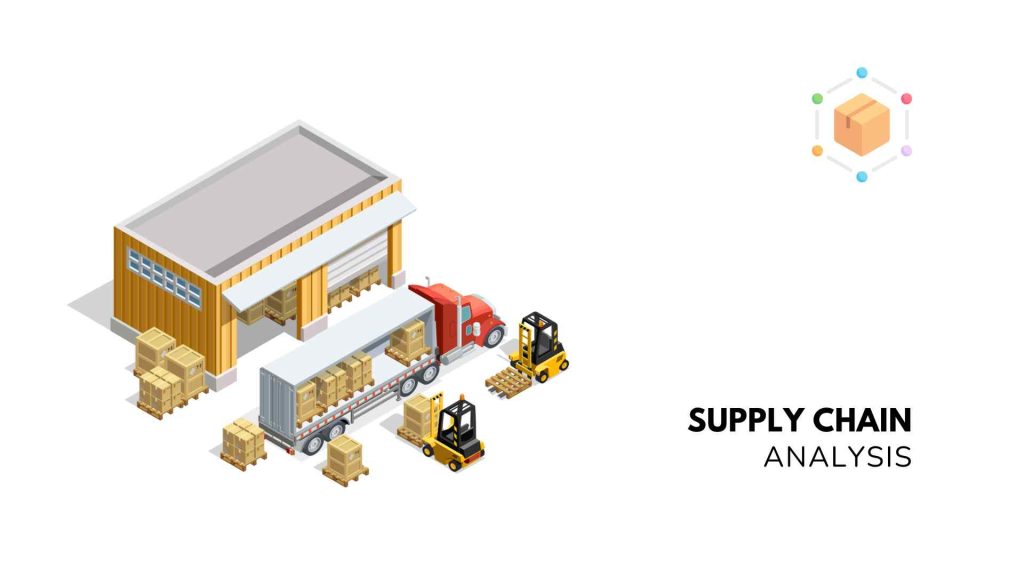In today’s global marketplace, the supply chain is the lifeblood of every business, connecting raw materials to finished products and delivering them to eager customers. It’s a complex web of processes, partners, and decisions that, when optimized, can make the difference between success and mediocrity. To thrive in this competitive environment, companies must embrace the power of supply chain analysis.
This comprehensive guide will illuminate the significance of supply chain analysis and provide a roadmap for businesses looking to unlock their potential. Join us on a journey through the intricacies of this critical business strategy and discover how it can reshape your operations, enhance your profitability, and ensure customer satisfaction.
Understanding Supply Chain Analysis
What is Supply Chain Analysis?
Supply chain analysis systematically examines a supply chain’s various components, processes, and stakeholders. It aims to identify strengths, weaknesses, opportunities, and threats to improve supply chain efficiency. This data-driven analysis focuses on enhancing performance, reducing costs, and increasing overall effectiveness.
The Importance of Supply Chain Analysis
Cost Reduction: Supply chain analysis helps identify cost-saving opportunities through efficient resource allocation, waste reduction, and improved inventory management.
Enhanced Efficiency: It enables streamlining processes, reducing lead times, and minimizing disruptions, resulting in faster delivery and better customer satisfaction.
Risk Mitigation: supply chain analytics identifies vulnerabilities in the supply chain and allows companies to develop contingency plans to mitigate potential risks.
Competitive Advantage: A well-optimized supply chain is a key differentiator in the market, giving businesses a competitive edge.
Key Components of supply chain analytics
Data Collection and Analysis
Effective supply chain analysis begins with data. Companies should gather and analyze data from various sources, such as suppliers, production facilities, transportation, and customers. Advanced analytics tools can provide real-time insights into supply chain performance.
Performance Metrics
To estimate the success of the supply chain, it is crucial to define and track key performance indicators (KPIs). Metrics like on-time delivery, order accuracy, inventory turnover, and fill rate help evaluate the supply chain’s performance and identify areas for improvement.
SWOT Analysis
Performing a SWOT analysis on the supply chain allows you to assess internal and external factors affecting its performance. This analysis aids in strategy development and risk mitigation.
Tools and Technologies
Supply Chain Management Software
Various software solutions are available to streamline supply chain operations, including Enterprise Resource Planning (ERP), Warehouse Management Systems (WMS), and Transportation Management Systems (TMS). These tools facilitate data integration, inventory management, and demand forecasting.
Internet of Things (IoT)
IoT sensors and devices revolutionize supply chain analytics by providing real-time product and asset location, condition, and performance data. This information improves decision-making and enhances supply chain visibility.
Best Practices for supply chain analytics
Collaborative Relationships
Strong associations with suppliers and partners are crucial for a potent supply chain. Collaborative initiatives can help optimize processes and ensure a smooth flow of goods and information.
Continuous Improvement
supply chain analytics is an ongoing process. Companies should regularly review their analysis results, adapt to changing market conditions, and implement continuous improvement initiatives.
Scenario Planning
To prepare for unexpected disruptions, companies should use scenario planning to develop strategies for various supply chain scenarios. This proactive approach minimizes the impact of unforeseen events.
supply chain analytics is a powerful tool that can drive operational efficiency, reduce costs, enhance customer satisfaction, and create a competitive advantage for businesses. By understanding the components of supply chain, utilizing the right tools and technologies, and implementing the best methods, enterprises can unlock the full potential of their supply chain. In a world where supply chain resilience and agility are paramount, harnessing the power of supply chain is not just an option – it’s a necessity for sustainable success.
How Can Acumatica Enhance?
Acumatica Cloud ERP stands as a powerful ally in the quest to enhance supply chain analytics. With its extensive range of capabilities, including real-time data integration, inventory management, and demand forecasting, Acumatica empowers companies to facilitate their supply chain functions and gain deeper insights into performance metrics.
Its flexibility and scalability allow companies to adapt to changing market conditions, making it a robust solution for today’s dynamic business environment. By leveraging Acumatica ERP, organizations can optimize their supply chain and transform it into a strategic investment that boosts efficiency, reduces costs, and delivers a competitive edge. With Acumatica ERP, the power of supply chain analytics becomes a reality, driving businesses toward a more prosperous and agile future. Contact us for a Customized ERP solution.

Vijay comes with a vast experience in ERP and enterprise solutions space with about 20 years of experience in various packaged application like Acumatica, SAP, Orion, Salesforce.com, SugarCRM and, SalesLogix.

